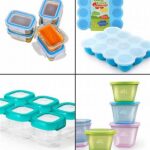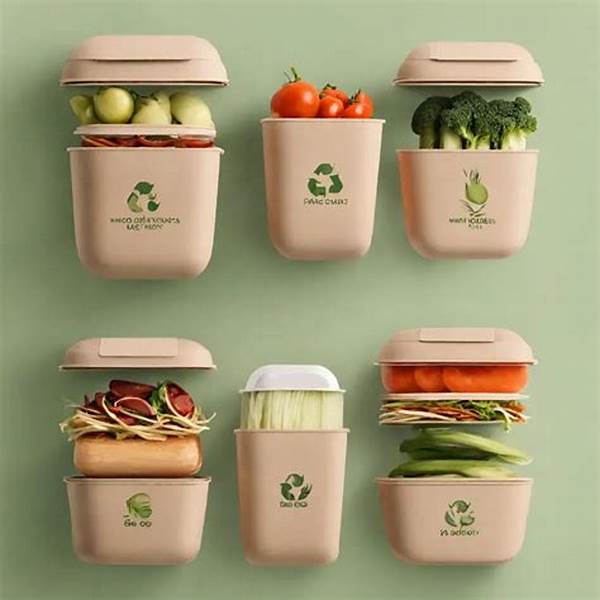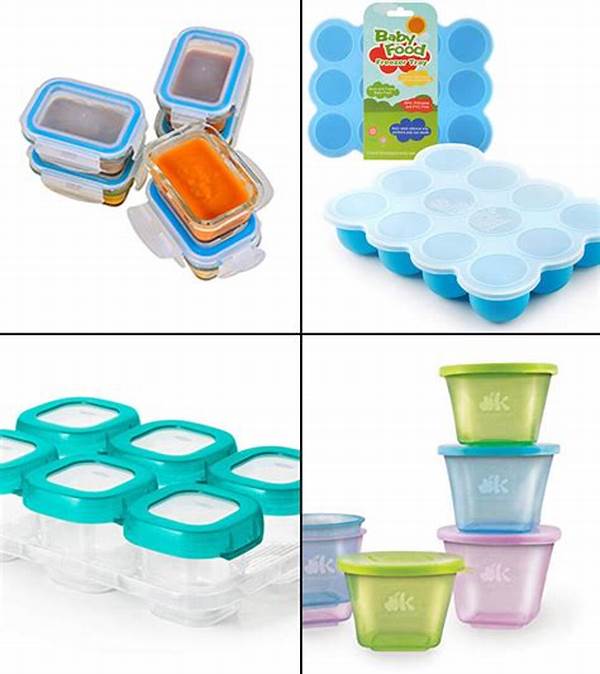Have you ever found yourself rummaging through the kitchen, only to feel a pang of guilt over the plastic clutter that seems to inevitably accumulate? You’re not alone. Across the globe, there’s a growing awareness and commitment to reduce waste and protect our planet. One small, yet significant change many are adopting is the shift towards eco-friendly food containers. This trend doesn’t just save our conscience, but potentiallly also our planet.
Read More : Stores That Sell Trash Containers
Imagine reaching for your lunch and not experiencing the unwelcome crunch of plastic. Instead, you find yourself unboxing your meal from sleek, bamboo containers or perhaps a delightful fabric wrap. And you feel good knowing this simple choice contributes to a larger environmental effort. Eco-friendly food containers are not just changing how we pack our lunches; they’re revolutionizing our approach to sustainability and offering a taste of guilt-free convenience.
Understanding the Rise of Eco-Friendly Food Containers
The Eco Revolution in Your Kitchen
Our kitchens are often the starting point of change. The shift towards eco-friendly food containers is a tangible reflection of a broader societal move to embrace more sustainable practices. Recent studies have showcased that nearly 70% of consumers are willing to pay more for green packaging options. There’s a profound shift from the use-once-and-dispose mentality to adopting sustainable, continually reusable, and biodegradable materials that align with Mother Nature’s cycles.
The appeal of these eco-friendly food containers goes beyond just their practicality. It’s about an emotional and rational desire to be part of something bigger—a global community movement aiming to curtail waste and challenging corporations to rethink the life cycle of their products. It’s more than a container; it’s a statement of values and a step towards preserving our environment for future generations.
Eco-friendly Materials Aren’t Just a Fad
The variety of materials used in eco-friendly food containers is impressive. You have options ranging from sturdy stainless steel to biodegradable plant fibers and even highly stylized silicon that feels like a toy for adults longing to embrace their youthful whimsy. These materials aren’t just trendy; they’re tested for durability and proven for their minimal impact on the environment.
Marketers promote them using stories of innovation where science meets sustainability. For instance, companies are weaving a narrative of tantalizing tales about how compostable products break down to nurture the earth or how plant-based alternatives can foster not only eco-friendliness but also human and animal survival through reduced carbon footprints.
From Concept to Countertop: The Journey of Eco-Friendly Containers
The Power of Testimonial and Advocacy
One might ask, how do these containers infiltrate our homes? It’s by word of mouth, backed by glowing testimonials from early adopters. Individuals share stories of discovery with the zeal of a sunlit morning chat, exchanged over dens of virtual and physical social gatherings. Social media platforms are flooded with picturesque posts showcasing these containers in all their vibrant, reusable glory, reinforcing their place as a part of daily life that’s rapidly transforming how the world packages food.
Clearly, the community factor can’t be overlooked here. There’s an unspoken element of peer pressure. Owning and using eco-friendly food containers gives one social clout, branding the user as environmentally conscious and trendy. Furthermore, there’s a shared sense of camaraderie in the pursuit of a collectively greener lifestyle.
Read More : Shipping Containers For Sale Used As Modular Classrooms 2025
Unpacking the Data: Global Trends
Statistics show that the insertion of eco-friendly philosophies in product packaging is not a fleeting trend but an upward trajectory. Market research indicates a steady increase in the global market for eco-friendly food containers, projected to grow by 6% per annum through the next five years. This growth is fueled by legislation supporting sustainability, increased consumer awareness, and technological advancements making eco-friendly options more accessible and affordable.
Designing for Efficiency and Style
In the face of rising demand, designers are tasked with juggling efficiency, aesthetics, and cost. Eco-friendly food containers now come in varied shapes, sizes, and colors—crafted to fit seamlessly into both minimalist and maximalist lifestyles. Using cutting-edge technology, designers are exploring innovative features that enhance the experience of food preparation and storage. Think vacuum-sealed biodegradable bags that keep food fresh for longer or bento boxes made from recyclable materials that double as chic dining accessories.
Points of Consideration for Eco-Friendly Food Containers
Conclusion: The Global Movement Towards Sustainability
Future Prospects
As we gaze into the crystal ball of culinary storage solutions, the future gleams green. Eco-friendly food containers are poised to become an integral part of households worldwide, transcending cultural and geographical barriers. The sustainable movement is gearing up to influence not just how we store our food, but how we interact with the environment—a relationship that embraces nurturing our planet as much as it nurtures us.
A Personal Invitation
Join the steadily expanding ranks championing sustainability. Swap out that old, scratched plastic for something as enduring as your commitment to the planet. Embrace your new aesthetic—a seamless blend of responsibility and style. Share your journey on social media and inspire others. It’s time for action, and it’s as simple as changing how you carry lunch.
The Final Word
In conclusion, eco-friendly food containers are gaining popularity worldwide not merely from an ecological necessity but from a deeper, intrinsic desire to foster harmony between our lifestyles and our planet. Their rise embodies the confluence of rational innovation and emotional commitment, propelling us toward a more sustainable future, box by box, wrap by wrap. Get involved—make the switch, advocate for change, and witness a global revolution that starts right from your kitchen countertop.










